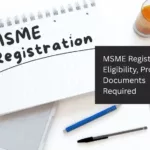
Have you ever wondered what is CKYC and why it matters when dealing with banks or investments? CKYC means Central Know Your Customer, a system designed to store your KYC details in one secure place.
Once you register, you don’t need to submit your documents every time you open a bank account, invest in mutual funds, or buy insurance. This saves you time and reduces paperwork.
It also makes financial transactions safer and easier. In this article, we’ll explain CKYC in simple terms, how it works, its benefits, and how you can find your CKYC number online.
What is Central KYC (CKYC)?
The C KYC full form is Central Know Your Customer. It is a system introduced by the Indian government to make the KYC process easier for both customers and financial service providers. Instead of submitting your KYC documents every time you deal with a new bank, mutual fund, or insurance company, you only need to do it once.
To register, you must fill in the CKYC form with details like your name, address, PAN, bank information, and ID proof. Once your details are checked and approved, you get a unique 14-digit CKYC number, which can be used across multiple financial institutions.
How does CKYC Works?
When you start a new financial relationship, such as investing in a fund, you will be asked to provide certain documents and complete a KYC form. These details are then sent to CERSAI, which manages the CKYC system.
You will receive a 14-digit CKYC number after your submitted documents have gone through the verification process. With this, you won’t have to submit your documents again. They can simply request your details from CERSAI using your CKYC number, saving you both time and effort.
Key Advantages of Using CKYC
The CKYC system comes with many benefits such as:
- Saves time and effort – You do not have to go through the entire documentation process every time you invest or open an account,once you have registered.
- Easy to update – You can change or update your details in the central KYC registry whenever needed without much hassle.
- Simple registration process – The steps to complete CKYC are straightforward and easy to follow.
- Improved security – Helps reduce the chances of money laundering and other unlawful activities.
- Less work for institutions – Financial service providers can quickly access customer details from the central database.
- Convenient for investments – With your CKYC number, you can easily buy or invest in multiple financial products without repeating KYC formalities.
Different Categories of CKYC Accounts
The central KYC registry records four main types of CKYC accounts:
1. Normal CKYC Account
This is opened when you submit any of the six valid documents, such as your PAN card, Aadhaar card, passport, voter ID, driving licence, or a job card issued by NREGA duly signed by a State Government officer. It is linked to your PAN and other essential identification details.
2. Simplified CKYC Account
Also called a low-risk account, this is for people who cannot provide the officially valid documents but can submit other acceptable proofs like utility bills. It helps low-risk customers open an account easily with a single KYC form that works across all CKYC-registered institutions.
3. Small Account CKYC
This type is for customers who do not have the required documents. It allows them to open a basic account that can be used in multiple financial institutions, but it has limits on transactions and validity.
4. OTP-Based eKYC Account
Created using Aadhaar verification, this account requires a one-time password (OTP) sent to your registered mobile number. The OTP is generated after submitting your details and is verified through the UIDAI system. This type of account can be opened only if your Aadhaar is linked to your registered mobile number and may have transaction limits as per RBI guidelines.
These account types make it easier for different people to access financial services, regardless of the documents they have.
CKYC vs KYC, eKYC – What Sets Them Apart?
Many people get confused between what is CKYC, regular KYC, and eKYC. Here’s how they are different:
- KYC (Know Your Customer) – This is the basic process where you submit your documents to each bank or financial institution separately whenever you start a new relationship with them.
- eKYC – This is an electronic type of KYC. Your details are verified online, often using your Aadhaar number and a one-time password. eKYC is quicker than the traditional KYC process, however, in most cases, it still needs to be done separately for each institution unless you are using a shared KYC repository service.
- CKYC (Central KYC) – The C KYC full form is Central Know Your Customer. In this system, your documents are stored in one place — the central KYC registry. Any bank or investment company can access your verified details without asking you to submit them again once you have registered.
Steps to Find Your CKYC Number Online
If you are wondering how to get CKYC number, it is very easy:
- Visit your financial provider’s website.
- Go to the CKYC section.
- Enter your PAN card number.
- Complete the captcha and submit.
Your CKYC number will be displayed if it has been registered in the system.
Documents Needed for CKYC Registration
To complete your CKYC registration, you will need:
- Proof of identity – PAN card, Aadhaar card, passport or voter ID.
- Proof of address – Aadhaar card, passport, utility bills, or bank statement.
- Recent passport-size photographs.
- Bank account details, if required.
Conclusion
The central KYC registry has made the KYC process easier and safer for everyone. By registering once, you save time and avoid repeating the same paperwork across different financial institutions.
Your CKYC number ensures smooth transactions whether you are opening a bank account, investing, or applying for a personal loan. If you haven’t registered yet, consider completing your CKYC to make your financial dealings more convenient.
Frequently Asked Questions (FAQs)
1. What is CKYC and why is it important?
CKYC stands for Central Know Your Customer. It stores your verified documents in one central database so you don’t have to submit them repeatedly.
2. What is CKYC number?
It’s a unique 14-digit number given to you once your documents are verified by the central KYC registry.
3. How to get CKYC number?
After completing CKYC registration, you can check it online on the CERSAI website using your PAN number.
4. Is CKYC the same as eKYC?
No, eKYC is done online but must be repeated for each financial service provider, while CKYC is a one-time process.
5. What is CKYC central KYC online?
It’s the online system where your KYC details are stored and shared securely among authorised financial institutions.








